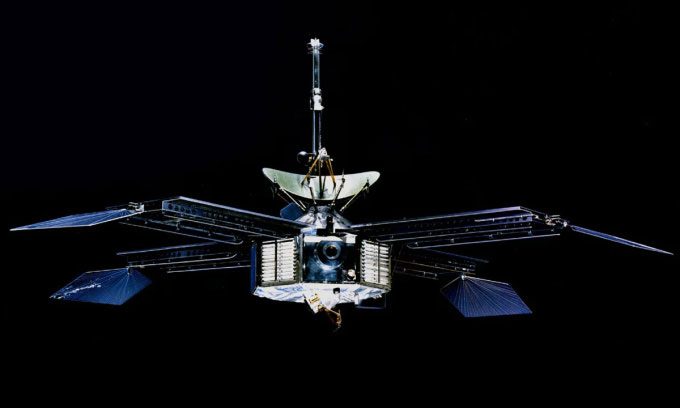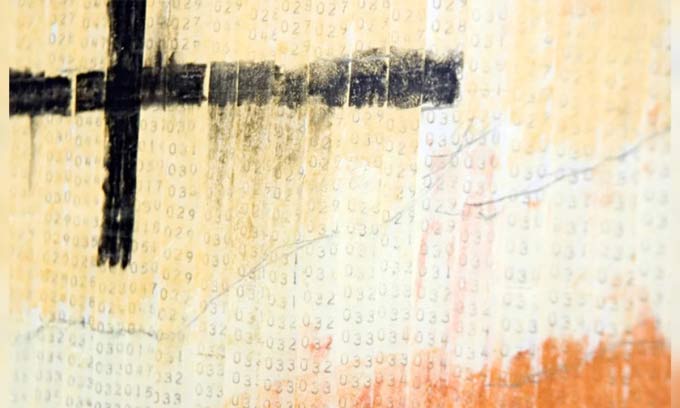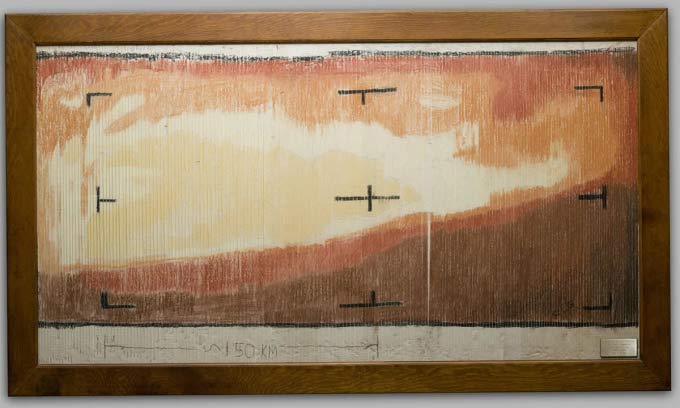The work represents the first close-up image of another planet, not a true photograph but a manually colored rendition.

Mariner 4 is the first spacecraft to take close-up images of another planet. (Photo: NASA)
The first image of Mars broadcasted on TV in 1965 is now part of a small exhibition at the Spacecraft Assembly Facility on the grounds of NASA’s Jet Propulsion Laboratory (JPL) in Pasadena, California, CNN reported on July 15. However, this work, representing the first image of another planet from outer space, was not a true photograph.
In 1962, Mariner 2 became the first spacecraft to visit another planet by flying past Venus. This milestone motivated NASA engineers to develop a more ambitious project: to photograph planets from space.
On November 5, 1964, Mariner 3 was launched into space. Unfortunately, the spacecraft lost power just 8 hours later when its protective cover failed to deploy, and its solar panels did not open. With a quickly redesigned protective cover, Mariner 4 launched on November 28, beginning a 228-day journey to Mars. The spacecraft carried a television camera to capture images of the planet from a close distance, alongside six scientific instruments to study the surface and atmosphere of Mars.
Mariner 4 flew at an altitude of 9,845.5 km above the surface of Mars on the night of July 14, capturing 22 images of the planet. It carried the first digital imaging system used outside of Earth. This system converted the analog signals from the camera into digital format and slowly transmitted data back to Earth at a rate of about 8.33 bits per second. This meant it took 10 hours to send a single image back home. The transmission process was extremely slow by today’s standards, while at the same time, the media had gathered at JPL, eagerly awaiting the release of the first images.

The numbers correspond to the data points on the teletype paper. (Photo: Dan Goods/NASA/JPL-Caltech).
While waiting for the first images, some members of the Mariner 4 team decided to tackle the problem themselves. Richard Grumm, who supervised the data recording operations on Mariner 4, and team members began converting the digital data from the spacecraft into numbers like 1 and 0 on teletype paper. The team pinned 7.6 cm wide strips to a mobile wall and decided to color the numbers based on the brightness of each pixel. They viewed this as a way to verify whether the data recorder was functioning and capturing light reflected from the planet.
Grumm ran to an art supply store to find chalk. He wanted to use different shades of gray, but the store only had a set of colored chalk. Thus, he and a colleague used brown, red, and yellow chalk. As the numbers were colored in, the edge of the planet gradually emerged. Dark brown was used to depict the void of space. The brightest colors illustrated Mars, while orange represented clouds in the atmosphere. Black markings from the camera lens also appeared.
This confirmed that the camera was working well, capturing images, and that the data received was good. “Everyone was worried that the mission would fail. The image we see here is the result of engineers trying to verify the hardware, ensuring that it was functioning normally,” said David Delgado, a cultural strategist at JPL.
Despite the efforts of the communications team at JPL, journalists saw this “color-by-number” image before the actual photograph was released. As a result, it became the first image of Mars broadcast on TV. The wall segment covered with teletype paper was later cut out, framed, and presented to JPL director William Pickering.

The manually colored version of the image taken by Mariner 4, now part of the exhibition at NASA’s Jet Propulsion Laboratory (JPL) in Pasadena, California. (Photo: Dan Goods/NASA/JPL-Caltech).
Mariner 4 sent back all 22 images between July 15 and August 3, 1965. They revealed craters on the surface and clouds hovering in the Martian atmosphere, both of which surprised scientists. Mariner 4 inadvertently flew over one of the oldest terrains on Mars, resembling the cratered surface of the Moon more than anything else.
The series of images from the spacecraft represented less than 1% of the Martian surface and lacked the diverse features that later missions, such as Viking 1, would capture. However, the first data about Mars sent back by Mariner 4 sparked a desire to understand the Red Planet better. This desire continues to this day as the Perseverance and Curiosity rovers, the Ingenuity helicopter, and numerous orbiters strive to uncover more of Mars’ secrets.


















































